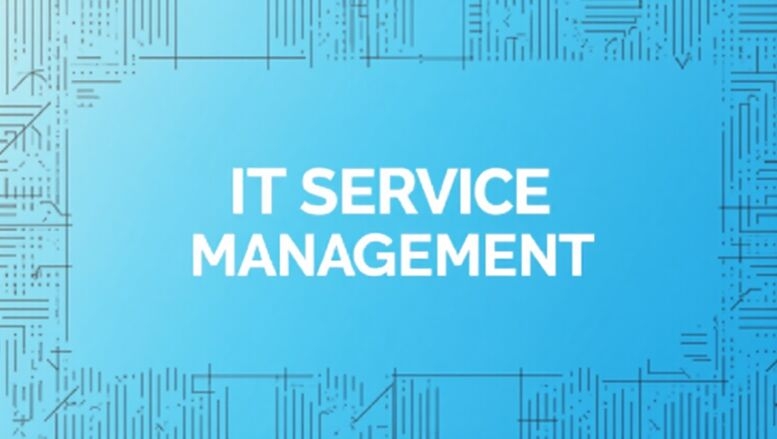In today’s digital landscape, delivering IT as a structured service is no longer optional—it’s foundational. Whether you operate in banking, healthcare, or retail, organisations increasingly adopt IT Service Management, or ITSM, to standardise how IT deliverables reach end users. This guide dives into ITSM’s essence, framework, benefits, and why it’s critical for Indian enterprises.
Understanding ITSM: Definition and Scope
At its core, IT Service Management is the disciplined approach IT teams use to design, deliver, manage, and optimise IT services offered to customers or internal users. Rather than focus on systems or tools alone, ITSM emphasises customer-centric processes and continual improvement.
It’s less about “fixing computer issues” and more about defining how services are requested, provisioned, supported, and governed. This holistic mindset helps transform IT into a reliable service provider aligned with business goals.
Why ITSM Matters
The shift towards ITSM reflects the evolving needs of modern enterprises:
- Complex tech ecosystems: Hybrid infrastructure, cloud platforms, and SaaS tools demand standardised processes.
- Customer and regulatory pressure: Users expect fast, transparent service, and businesses must demonstrate compliance and governance.
- Efficiency and cost control: Predictable workflows reduce manual effort, cut risk, and optimise resource allocation.
Adopting ITSM lets organisations move from fragmented support to a service‑oriented approach with measurable outcomes.
ITSM Framework: Essential Components Explained
ITSM is enabled through structured modules. Here are the pivotal components:
1. Service Request Management
This handles routine requests—like access provisioning or hardware orders—through standard workflows. Service request management ensures consistency and fulfils user needs promptly.
2. Incident Management
When disruptions occur, this process restores normal operations swiftly—reducing downtime and maintaining user satisfaction. Automation and prioritisation often play key roles.
3. Problem Management
Responding to single incidents isn’t enough. Problem management seeks root causes to prevent recurrence—a smarter, more proactive approach to service reliability.
4. Change Enablement
This domain governs IT changes—new features, upgrades, or fixes—with controlled workflows, impact assessment, and stakeholder approvals. ITSM frameworks encourage fast but safe change execution.
5. Configuration & Asset Management (CMDB)
Maintaining a central system of record for IT assets, their configurations, and interdependencies is essential. It forms the foundation for informed decision-making and impact analysis.
6. Knowledge Management
Documenting processes, resolutions, and known issues empowers users and support teams. A well‑structured knowledge base reduces repetitive requests and fosters self‑service.
ITSM Processes: How They Function Together
Rather than isolated tasks, ITSM modules interlock to form an ecosystem:
- A user submits a service request → it’s managed via request workflows.
- If systems fail, incident management launches—alerting teams and restoring service.
- If several incidents reflect a pattern, problem management action is triggered.
- Any significant change goes through the change enablement pipeline.
- Support teams reference the knowledge base whenever they need standard guidance.
- Throughout, a CMDB tracks assets and services for context and control.
This unified model promotes consistency, traceability, and process-driven efficiency throughout IT operations.
Building ITSM Capability: Approach and Adoption
Best-practice organisations start small—perhaps with incident and request handling—before layering in change, problem, and asset management. This modular strategy simplifies adoption and allows measurable benefits early on.
Automation is a second pillar. Modern platforms offer adaptive workflows, chatbots, and dynamic routing which accelerate service delivery while maintaining compliance and audit traceability.
Benefits for Indian Enterprises
Integrated ITSM brings tangible value, particularly in the Indian enterprise context:
- Operational transparency and control: Dashboards track service levels, request volumes, and breach trends.
- Improved compliance readiness: Structured processes support auditability, vendor agreements, and financial controls.
- Enhanced user experience: Predictable service delivery builds trust, especially in high‑growth sectors like IT, BFSI, and healthcare.
- Cost efficiency: Automation and standardisation reduce redundant processes and resource wastage.
- Scalability: As businesses grow, new services and tools can be onboarded without repeating fractured support models.
Common Misconceptions
Several myths persist around ITSM:
- “It’s only for large companies” — In reality, modular ITSM fits organisations of all sizes. Scalable tools support phased adoption.
- “Just a ticketing system” — Traditional help desks handle tickets; ITSM is process-led, metrics-focused, and outcome-oriented.
- “Red tape slows change” — Modern change enablement enables fast, low‑risk updates through automated approvals and impact assessment.
Debunking these myths clarifies that ITSM is both strategic and flexible.
Choosing the Right ITSM Tool
Evaluation criteria should include:
- Process coverage (incidents, requests, change, asset tracing)
- Automation capabilities (workflows, bots, analytics)
- Integration support (CMDB, procurement, HR, DevOps tools)
- Usability and mobile support
- Scalability and pricing aligned with organisation size
Leading platforms include Freshservice, ServiceNow, ManageEngine ServiceDesk Plus, Jira Service Management, and BMC Helix.
Key Performance Metrics
Successful ITSM implementations track:
- Mean Time to Resolution (MTTR) and incident backlog
- Request fulfilment turnaround
- Change success rates and collision incidence
- Knowledge base utilisation
- Service level agreement (SLA) compliance
Such metrics provide visibility into performance and guide continuous improvement.
Final Thoughts
IT Service Management is a service-first discipline that brings coherence, predictability, and continuous improvement to IT operations. It elevates IT from reactive support to strategic enablement. For Indian enterprises navigating digital transformation, regulatory scrutiny, and workforce changes, adopting ITSM is not just a choice—it’s a necessity.
With structured processes, automation, and ongoing governance, ITSM helps organisations align IT services with business goals, ensure compliance, and deliver user-centric support—efficiently.
FAQs
1. What’s the difference between ITSM and a help desk?
A help desk addresses individual tickets. ITSM embeds systematic processes—covering incident, change, knowledge, and asset management—to deliver IT as a business-aligned service.
2. Is ITSM appropriate for mid-sized organisations?
Yes. Many ITSM platforms support tiered adoption, allowing mid-sized companies to begin with core modules and expand as their maturity grows.
3. How long does it take to implement ITSM?
Timeframes vary. A phased rollout focusing on incident and request management can take a few weeks to a couple of months. More comprehensive, enterprise-wide deployments might span several months with change management and continuous improvement layered in.









